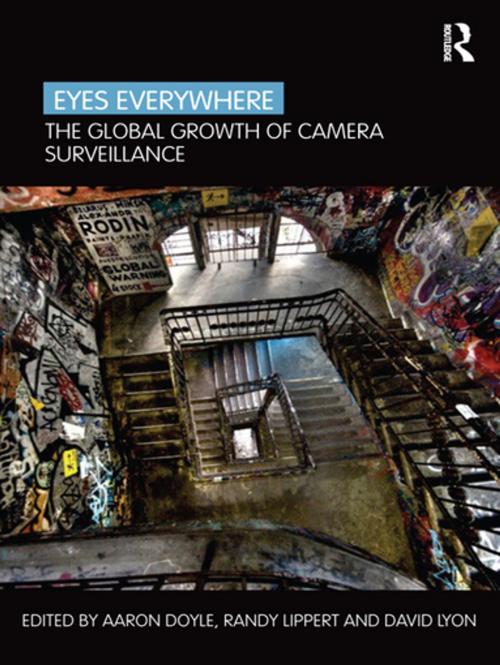Eyes Everywhere
The Global Growth of Camera Surveillance
Nonfiction, Social & Cultural Studies, Social Science, Crimes & Criminals, Criminology| Author: | ISBN: | 9781136496981 | |
| Publisher: | Taylor and Francis | Publication: | March 1, 2013 |
| Imprint: | Routledge | Language: | English |
| Author: | |
| ISBN: | 9781136496981 |
| Publisher: | Taylor and Francis |
| Publication: | March 1, 2013 |
| Imprint: | Routledge |
| Language: | English |
In many countries camera surveillance has become commonplace, and ordinary citizens and consumers are increasingly aware that they are under surveillance in everyday life. Camera surveillance is typically perceived as the archetype of contemporary surveillance technologies and processes.
While there is sometimes fierce debate about their introduction, many others take the cameras for granted or even applaud their deployment. Yet what the presence of surveillance cameras actually achieves is still very much in question. International evidence shows that they have very little effect in deterring crime and in 'making people feel safer’, but they do serve to place certain groups under greater official scrutiny and to extend the reach of today’s ‘surveillance society’.
Eyes Everywhere provides the first international perspective on the development of camera surveillance. It scrutinizes the quiet but massive expansion of camera surveillance around the world in recent years, focusing especially on Canada, the UK and the USA but also including less-debated but important contexts such as Brazil, China, Japan, Mexico, South Africa and Turkey. Containing both broad overviews and illuminating case-studies, including cameras in taxi-cabs and at mega-events such as the Olympics, the book offers a valuable oversight on the status of camera surveillance in the second decade of the twenty-first century.
The book will be fascinating reading for students and scholars of camera surveillance as well as policy makers and practitioners from the police, chambers of commerce, private security firms and privacy- and data-protection agencies.
In many countries camera surveillance has become commonplace, and ordinary citizens and consumers are increasingly aware that they are under surveillance in everyday life. Camera surveillance is typically perceived as the archetype of contemporary surveillance technologies and processes.
While there is sometimes fierce debate about their introduction, many others take the cameras for granted or even applaud their deployment. Yet what the presence of surveillance cameras actually achieves is still very much in question. International evidence shows that they have very little effect in deterring crime and in 'making people feel safer’, but they do serve to place certain groups under greater official scrutiny and to extend the reach of today’s ‘surveillance society’.
Eyes Everywhere provides the first international perspective on the development of camera surveillance. It scrutinizes the quiet but massive expansion of camera surveillance around the world in recent years, focusing especially on Canada, the UK and the USA but also including less-debated but important contexts such as Brazil, China, Japan, Mexico, South Africa and Turkey. Containing both broad overviews and illuminating case-studies, including cameras in taxi-cabs and at mega-events such as the Olympics, the book offers a valuable oversight on the status of camera surveillance in the second decade of the twenty-first century.
The book will be fascinating reading for students and scholars of camera surveillance as well as policy makers and practitioners from the police, chambers of commerce, private security firms and privacy- and data-protection agencies.















